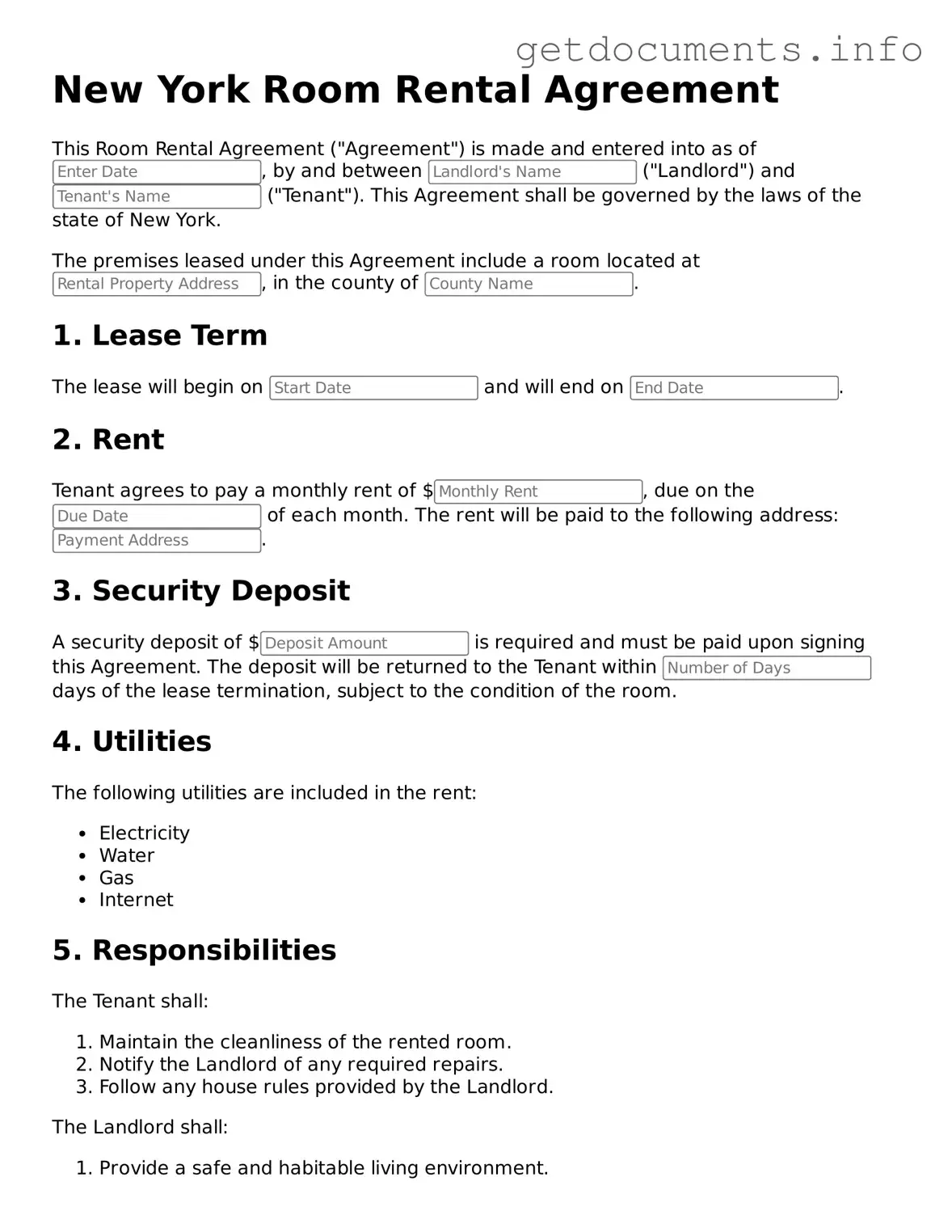Free Room Rental Agreement Template for New York
The New York Room Rental Agreement is a legal document that outlines the terms and conditions between a landlord and tenant for renting a room in a residential property. This agreement serves to protect the rights and responsibilities of both parties, ensuring a clear understanding of the rental arrangement. To get started with your rental process, fill out the form by clicking the button below.
Access Room Rental Agreement Editor
